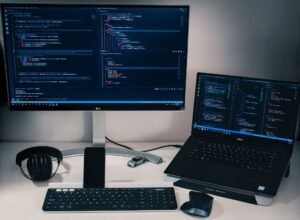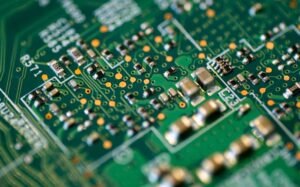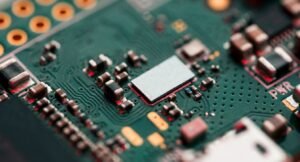Is AI Art Real?
In recent years, the combination of artificial intelligence (AI) and art has sparked a growing interest in the creative community. From AI-generated paintings to music compositions, this innovative approach to art creation has both fascinated and challenged traditional notions of human creativity. But is AI art real? Let’s explore this fascinating topic.
Key Takeaways
- AI art is a form of artistic expression created using artificial intelligence algorithms.
- Art created by AI raises questions about the role of human creativity and the definition of art itself.
- AI art is gaining recognition in the art world, with AI-generated works being exhibited and sold.
- Ethical concerns surrounding AI art include issues of authorship, ownership, and the potential for bias.
- The future of AI art is promising, as technology continues to advance and spark new artistic possibilities.
Exploring AI Art
AI art refers to art that is created or assisted by artificial intelligence technology. Through the use of complex algorithms, AI can analyze and interpret data to generate original artistic works, such as paintings, sculptures, music, and even poetry. *AI art blurs the line between man and machine, challenging our traditional understanding of human creativity.*
One of the key aspects of AI art is the ability of the AI system to learn and adapt based on datasets it has been trained on. This process, known as machine learning, allows the AI to understand patterns, styles, and techniques used in various art forms. By analyzing vast amounts of data, AI algorithms can generate novel compositions that mimic the style of famous artists or create entirely new and unique artistic styles.
The Recognition of AI Art
AI-generated art has gained traction in the art world and is increasingly being recognized as a legitimate form of artistic expression. In recent years, AI-generated artworks have been exhibited in renowned galleries and museums, attracting both art enthusiasts and technology enthusiasts alike. *This emerging form of art challenges the idea that creativity is exclusively a human domain and invites us to reconsider our definition of art.*
| AI Art Examples | Year | Recognition |
|---|---|---|
| Portrait of Edmond de Belamy | 2018 | Sold for $432,500 at auction |
| The Next Rembrandt | 2016 | Exhibited at ING’s Art Collection |
While AI-generated art has received recognition, its value and acceptance within the art community are topics of ongoing debate. Critics argue that AI art lacks the emotional depth and intentionality that human artists bring to their work. However, supporters of AI art believe that it opens up new possibilities and enriches the creative landscape.
Ethical Considerations
The rise of AI art raises important ethical considerations. Questions surrounding authorship and ownership of AI-generated works are still largely unresolved. Who should be credited as the artist? Is it the human programmer, the AI system, or a collaboration between the two? Additionally, concerns about bias in the training data used by AI algorithms highlight the need for transparency and an inclusive approach to ensure fair representation in AI-generated art.
Furthermore, the potential for AI to surpass human capabilities in art creation may raise concerns for traditional artists about the future of their craft. However, embracing AI as a tool for creativity can lead to unexpected collaborations and new artistic directions.
The Future of AI Art
The future of AI art is promising. As AI technology continues to advance, we can expect even greater innovation and experimentation in the realm of AI-generated art. *The fusion of AI and art has the potential to push boundaries, challenge artistic norms, and create entirely new forms of expression.*
| Artistic Capabilities of AI | Advancement |
|---|---|
| AI-generated paintings that resemble renowned artists | Current state |
| AI-generated music compositions | Emerging field |
| AI-driven interactive installations | Potential future development |
Artists and technologists are continually exploring the possibilities of AI art, pushing the boundaries of what can be achieved. As AI algorithms become more sophisticated and capable of complex creativity, we may witness the birth of entirely new art forms that were previously unimaginable.
In conclusion, AI art is indeed real and is making its mark in the art world. From questioning the nature of creativity to raising ethical considerations, AI-generated art challenges our preconceived notions and opens up new avenues for artistic exploration. As technology continues to evolve, AI art holds incredible potential for both artists and art enthusiasts, shaping the future of the creative landscape.

Common Misconceptions
Misconception 1: AI art is not created by humans
One common misconception surrounding AI art is the belief that it is created solely by machines without any human input. In reality, AI art is a collaboration between humans and machines, as artists use AI tools to assist them in the creative process.
- AI art is created through a combination of algorithms and human guidance.
- Artists use AI tools to generate ideas and explore possibilities, but still make the final creative decisions.
- AI is a tool that empowers artists, rather than replacing them.
Misconception 2: AI cannot be creative or have originality
Another misconception is that AI art lacks creativity and originality, as it is based on pre-existing data and algorithms. However, AI can generate novel and unique artwork that is distinct from anything humans have produced before.
- AI algorithms can combine and reimagine existing artwork to create something new and original.
- AI can push the boundaries of traditional artistic styles and create innovative art forms.
- Art created with AI can surprise and challenge our perceptions of what is possible.
Misconception 3: AI art is only for amateurs or non-artists
There is a misconception that AI art is a tool exclusively for amateurs or non-artists, and that it cannot be considered legitimate or valuable within the art world. However, many professional artists and institutions have embraced AI as a new medium of artistic expression.
- AI has been used by renowned artists to create significant and acclaimed works of art.
- AI art is exhibited in galleries, museums, and major art events worldwide.
- AI art challenges traditional notions of artistic skill and opens up new possibilities for creativity.
Misconception 4: AI art lacks human emotion and meaning
Some people believe that AI-created art lacks the emotional depth and meaning that can be found in human-made art. However, AI can be programmed to understand and mimic human emotions, and can evoke powerful emotional responses in viewers.
- AI algorithms can analyze and learn from a vast amount of human-created art, enabling them to understand and reproduce emotional expression.
- AI-created art can evoke a wide range of emotions, including joy, sadness, nostalgia, and wonder.
- AI art can explore and reflect on societal and cultural issues, providing meaningful commentary and critique.
Misconception 5: AI art will replace human artists
One of the biggest misconceptions surrounding AI art is the fear that it will replace human artists, making them obsolete. However, AI is a tool that augments and enhances human creativity, rather than replacing it.
- AI art is a result of human creative decisions and input.
- AI can be a powerful tool for artists, enabling them to explore new techniques, styles, and collaborations.
- AI art and human art can coexist and complement each other, offering new perspectives and possibilities in the art world.

Introduction
Artificial Intelligence (AI) has been pushing boundaries in various fields, and the realm of art is no exception. In recent years, AI has been used to generate stunning artwork, raising the question: is AI art real? This article dives deep into the world of AI-generated art and presents 10 fascinating tables that showcase the impact and potential of this emerging field.
Creative AI Masterpieces
AI algorithms have been trained on vast datasets to generate incredible pieces of art. Here are some of the most notable AI-generated masterpieces:
| Artwork | Artist |
|---|---|
| The Portrait of Edmond de Belamy | Obvious |
| Portrait of Edmond de Belamy | GANPaint Studio |
| Unconscious Hand: The Art of AI | Anna Ridler |
AI Art Market Trends
The rise of AI art has also impacted the art market in various ways. Let’s take a look at some intriguing trends:
| Trend | Description |
|---|---|
| Increase in Auction Prices | AI artworks have fetched millions of dollars in auctions. |
| Rise of AI Art Galleries | Specialized galleries dedicated to AI art are gaining popularity. |
| Collaborations with Human Artists | AI algorithms and human artists are joining forces to create unique pieces. |
Evaluating AI Art
When judging the quality and authenticity of AI art, several factors come into play:
| Factor | Importance |
|---|---|
| Innovation | How groundbreaking is the use of AI in the creation process? |
| Conceptual Depth | Does the AI-generated artwork convey meaningful ideas? |
| Technical Skill | What level of technical proficiency is exemplified in the artwork? |
Controversies Surrounding AI Art
The emergence of AI art has stirred up various controversies and debates within the art world:
| Controversy | Perspectives |
|---|---|
| Authenticity | Debates arise regarding whether AI can truly express creativity. |
| Intellectual Property | Issues surface around ownership rights and copyright of AI-generated art. |
| Reproducibility | Can AI-generated artwork be reproduced exactly or is it unique to one instance? |
AI Art Applications across Industries
The influence of AI art extends beyond the art world, finding applications in various industries:
| Industry | AI Art Application |
|---|---|
| Advertising | AI assists in creating captivating and personalized ad visuals. |
| Video Games | AI algorithms generate stunning landscapes and characters. |
| Architecture | AI helps in designing innovative and visually striking structures. |
AI Art: A Cultural Disruption
AI-generated art challenges preconceptions about creativity and the role of artists:
| Aspect | Impact |
|---|---|
| Redefined Creativity | AI introduces alternative perspectives on what constitutes creativity. |
| Democratization of Art | AI art enables more people to engage with and appreciate artistic expressions. |
| Rethinking the Artist’s Role | AI blurs the line between human-driven artistry and machine-driven creation. |
AI Art: Cultural Impact
The growing influence of AI art is evident in several cultural phenomena:
| Phenomenon | Description |
|---|---|
| AI Art Exhibitions | Exhibitions solely devoted to AI-generated art gain significant attention. |
| Social Media Virality | AI artworks often go viral on social media platforms, reaching millions of people. |
| Academic Research | AI art sparks extensive academic research across disciplines. |
AI Art: Future Possibilities
The world of AI art holds exciting possibilities for the future:
| Possibility | Description |
|---|---|
| AI-Driven Collaborative Creativity | AI and human artists working hand-in-hand to unlock new artistic frontiers. |
| Artworks Generated in Real-Time | AI algorithms continuously creating and adapting artwork based on external stimuli. |
| AI Art Criticism and Analysis | New fields of study emerging to analyze and critique AI-generated art. |
Conclusion
AI art is indeed real and has fostered a revolutionary shift in the art world. Through the tables presented, we have glimpsed the astonishing achievements of AI algorithms, explored market trends, assessed evaluation factors, delved into controversial issues, and observed the broad impact of AI art across industries and culture. As AI evolves further, the possibilities for AI-generated art are vast and will continue to challenge our perceptions of creativity and the role of artists.
Frequently Asked Questions
Is AI Art real?
Yes, AI Art refers to artworks created with the assistance of artificial intelligence systems.
What is AI Art?
AI Art, also known as computational art or generative art, is a form of artistic expression where digital tools and algorithms are used to create or enhance artworks.
How does AI create art?
AI creates art by utilizing various techniques, such as machine learning, deep learning, and computer vision, to analyze and interpret visual data and generate new artistic output.
Can AI be considered an artist?
AI itself cannot be considered an artist, as it lacks human consciousness and intentionality. However, the artworks created with AI can be considered as the result of collaboration between human artists and AI systems.
What role does the artist play in AI Art?
The artist plays a crucial role in AI Art, as they guide and shape the creative process by defining the input data, selecting and training the AI models, and curating the final artwork.
Is AI Art original?
AI Art can be original in the sense that the generated artworks are unique and created using novel algorithms and techniques. However, the question of originality in AI Art is still debated, as the AI system relies on existing data and patterns to create new compositions.
Can AI replace human artists?
No, AI cannot replace human artists. While AI can assist in the artistic process and generate intriguing outputs, it cannot replicate human creativity, emotions, and unique perspectives that artists bring to their work.
Is AI Art appreciated in the art world?
AI Art has gained recognition and appreciation in the art world. Many galleries, museums, and exhibitions now showcase AI-generated artworks, and collectors and art enthusiasts have shown interest in acquiring these innovative pieces.
Does AI Art have copyright protection?
The copyright protection for AI-generated artworks can be complex due to the involvement of both human artists and AI systems. In some cases, the copyright ownership might fall on the human artist who guided the AI process, while in other cases, it might be shared between the artist and the AI system developers.
What is the future of AI in art?
The future of AI in art is promising and opens up new possibilities for artistic expression. AI can continue to augment and transform the creative process, leading to the emergence of new art forms and exploring unchartered territories in the realm of visual aesthetics.




